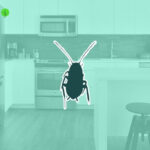Biting flies are more than just a nuisance; they can be vectors of disease and cause significant irritation to both humans and animals. For years, scientists have been puzzled by the unique black and white stripes of zebras. Recent research has revealed a fascinating reason behind this striking pattern: it’s a highly effective defense mechanism against biting flies. But how exactly do zebra stripes keep these pesky insects at bay, and can we apply these lessons to protect ourselves and our animals?
Scientists at the University of California, Davis, and the University of Bristol delved deeper into this question, building upon the initial discovery that zebra stripes deter flies. Their study, published in PLOS ONE, meticulously examined the behavior of biting flies around zebras to understand what makes stripes so disruptive to these insects.
To uncover the secrets behind zebra stripes, researchers conducted experiments on a horse farm in Great Britain, home to both zebras and horses. They employed a combination of close observation, detailed video analysis of fly flight paths, and even dressed horses and zebras in coats of different colors – black, white, and striped.
Their findings revealed that flies are just as attracted to zebras as they are to horses from a distance. The stripes don’t act as a repellent in the traditional sense. However, as flies approached zebras, their behavior changed dramatically.
“Once they get close to the zebras, however, they tend to fly past or bump into them,” explained Professor Tim Caro from UC Davis. “This indicates that stripes may disrupt the flies’ abilities to have a controlled landing.” The study highlighted that flies struggled to land smoothly on striped surfaces compared to solid colors. In fact, very few flies successfully landed on striped coats compared to black or white ones.
Professor Martin How from the University of Bristol suggested a possible explanation: “Stripes may dazzle flies in some way once they are close enough to see them with their low-resolution eyes.” Imagine stripes acting like a visual obstacle course, confusing the flies’ vision and making a precise landing incredibly difficult. Essentially, zebra stripes create “lousy landing strips” for biting flies.
Beyond their stripes, zebras also exhibit behavioral defenses against flies. The study observed that zebras constantly swish their tails, stop feeding when bothered by flies, and even run away from persistent swarms. Horses, in contrast, primarily twitch and occasionally swish their tails. This more active defense mechanism of zebras further contributes to keeping flies at bay, dislodging any flies that do manage to make contact.
While we may not evolve stripes ourselves, understanding how they work can offer insights into How To Keep Flies From Biting us and our animals. The visual disruption caused by stripes suggests that wearing patterned clothing, particularly with contrasting stripes, might offer some degree of protection against biting flies. While more research is needed to confirm this for humans, it’s an intriguing possibility.
Furthermore, mimicking zebra’s active defense behaviors can be helpful. Using fans to create air movement can deter flies, similar to a zebra’s tail swishing. For animals, providing access to shade and areas where they can move around freely to avoid fly concentrations is crucial. Of course, conventional methods like insect repellents and fly sprays remain effective strategies for both humans and animals.
The zebra’s natural defense system is a testament to the power of evolution. By understanding the science behind zebra stripes, we can gain valuable knowledge in our ongoing efforts to keep flies from biting and create more comfortable, fly-free environments. This research not only solves a long-standing zoological puzzle but also opens up potential new avenues for developing innovative and nature-inspired fly control strategies.
